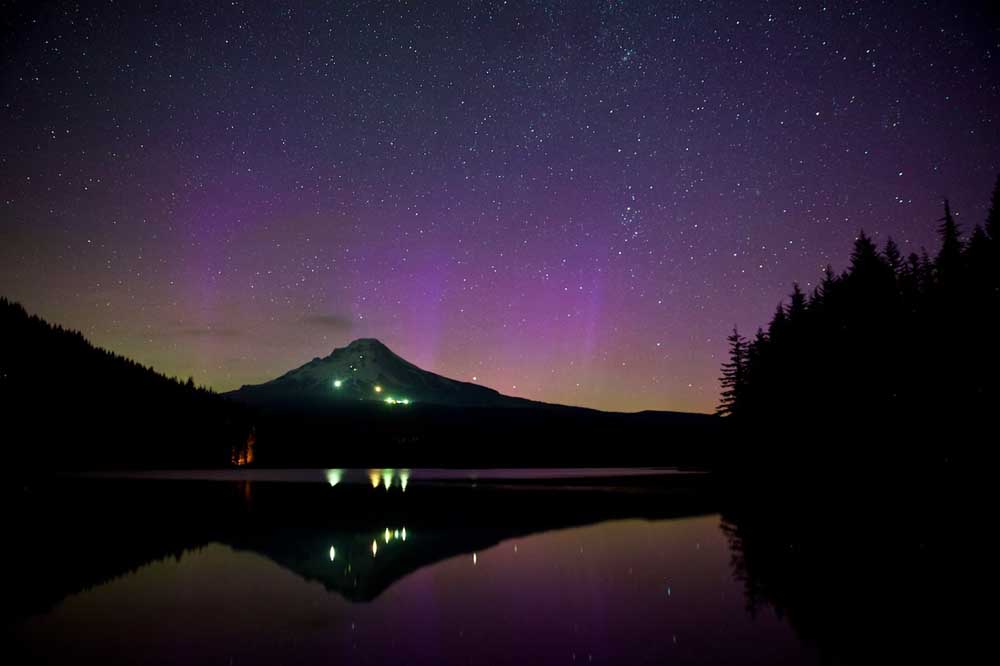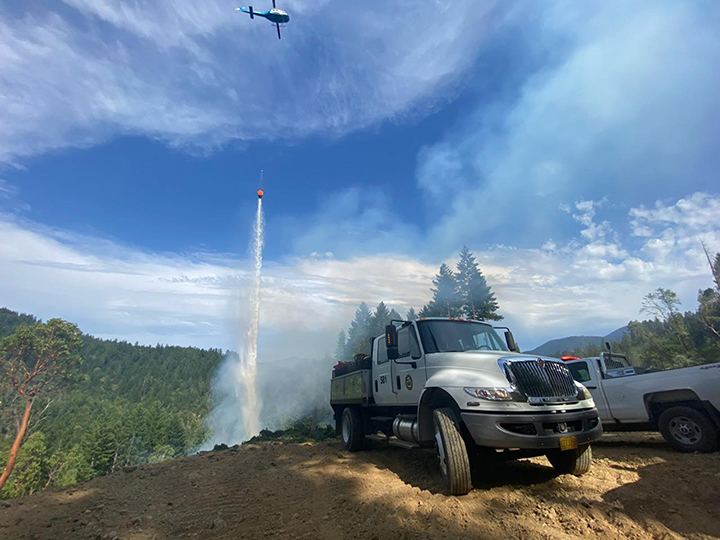Solar blast means Oregonians can see possibly historic northern lights
Published 10:45 am Friday, May 10, 2024

- The northern lights were visible over Mount Hood and Trillium Lake on June 23, 2015.
Recent high levels of solar activity have created increased chances of people in the Pacific Northwest seeing the northern lights, or aurora borealis, late Friday night and early Saturday morning.
This means areas away from light pollution (cities) could see the colorful lights in the night sky that are often only visible in the most northern parts of the continent or are blocked by clouds in the Pacific Northwest. Additional solar eruptions could cause geomagnetic storm conditions to persist through the weekend, according to NOAA’s Space Weather Prediction Center.
Clinton Wallace, director of NOAA’s Space Weather Prediction Center, called this “an unusual and potentially historic event.”
NOAA scientists noted that recent solar flares “have produced halo coronal mass ejection signatures that are expected to contribute to a train of at least five CMEs” visible in much of Oregon and likely arriving from late May 10 to early May 11.
The aurora should be visible during that time in most of the northern states, including Oregon, and far south as Alabama and Northern California. Although the timing of the aurora isn’t clear, skies above Oregon should be clear through the whole weekend. Those wanting to see it should be well away from light pollution areas and keep their eyes on the northern skyline.
The Associated Press reported that the solar blast could potentially disrupt power and communications.
The National Oceanic and Atmospheric Administration issued a rare geomagnetic storm watch — the first in nearly 20 years. That was expected to become a warning Friday night, when the effects of the solar outburst were due to reach Earth.
NOAA already has alerted operators of power plants and spacecraft in orbit to take precautions.
“As far as the worst situation expected here at Earth, that’s tough to say and I wouldn’t want to speculate on that,” said NOAA space weather forecaster Shawn Dahl. “However, severe level is pretty extraordinary. It’s a very rare event to happen.”
NOAA said the sun produced strong solar flares beginning Wednesday, resulting in five outbursts of plasma capable of disrupting satellites in orbit and power grids here on Earth. Each eruption — known as a coronal mass ejection — can contain billions of tons of plasma and magnetic field from the sun’s outer atmosphere, or corona.
The flares seem to be associated with a sunspot that’s 16 times the diameter of Earth, according to NOAA. An extreme geomagnetic storm in 2003 took out power in Sweden and damaged power transformers in South Africa.
The most intense solar storm in recorded history, in 1859, prompted auroras in central America and possibly even Hawaii. “That’s an extreme-level event,” Dahl said. “We are not anticipating that” but it could come close.
Visit www.spaceweather.gov for more information on watching for the northern lights.







